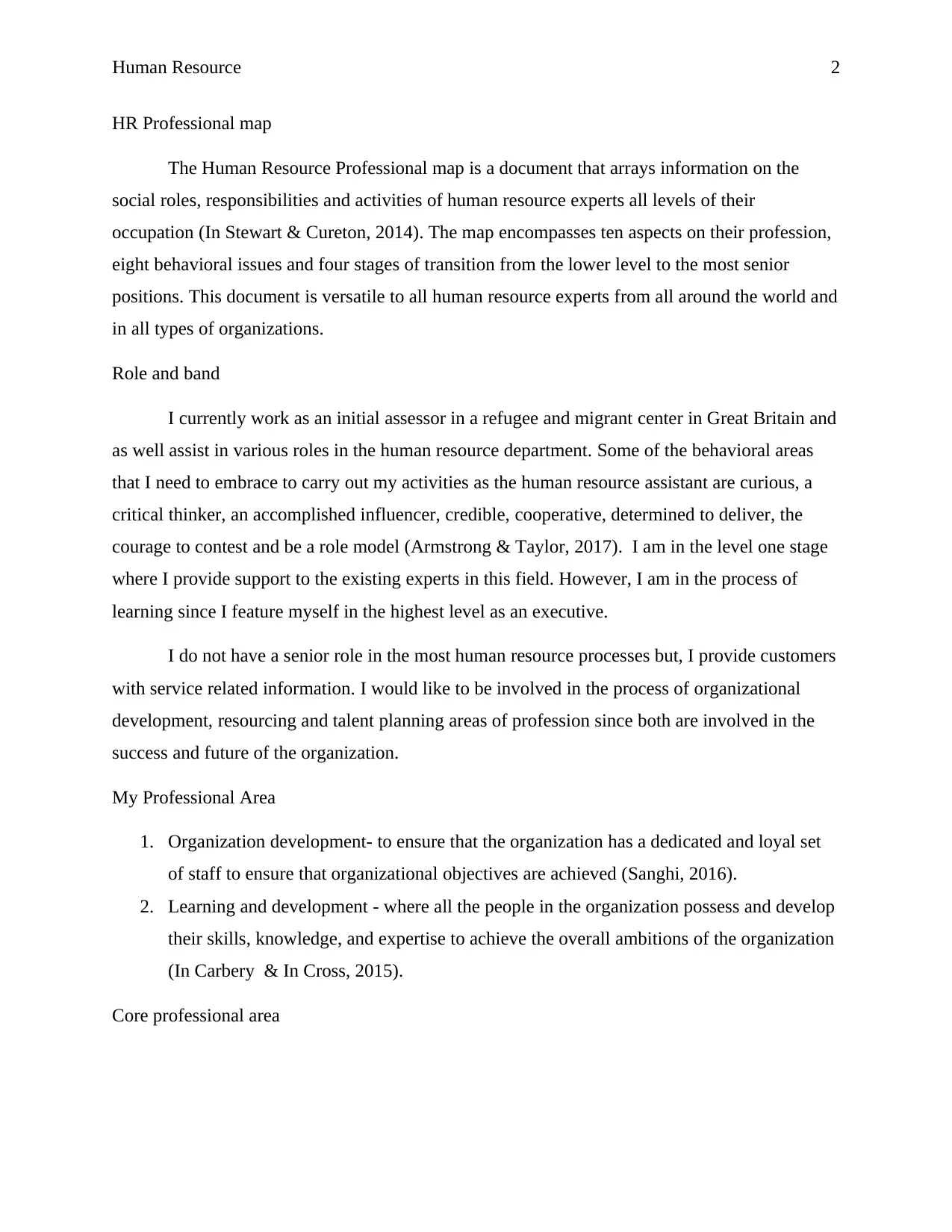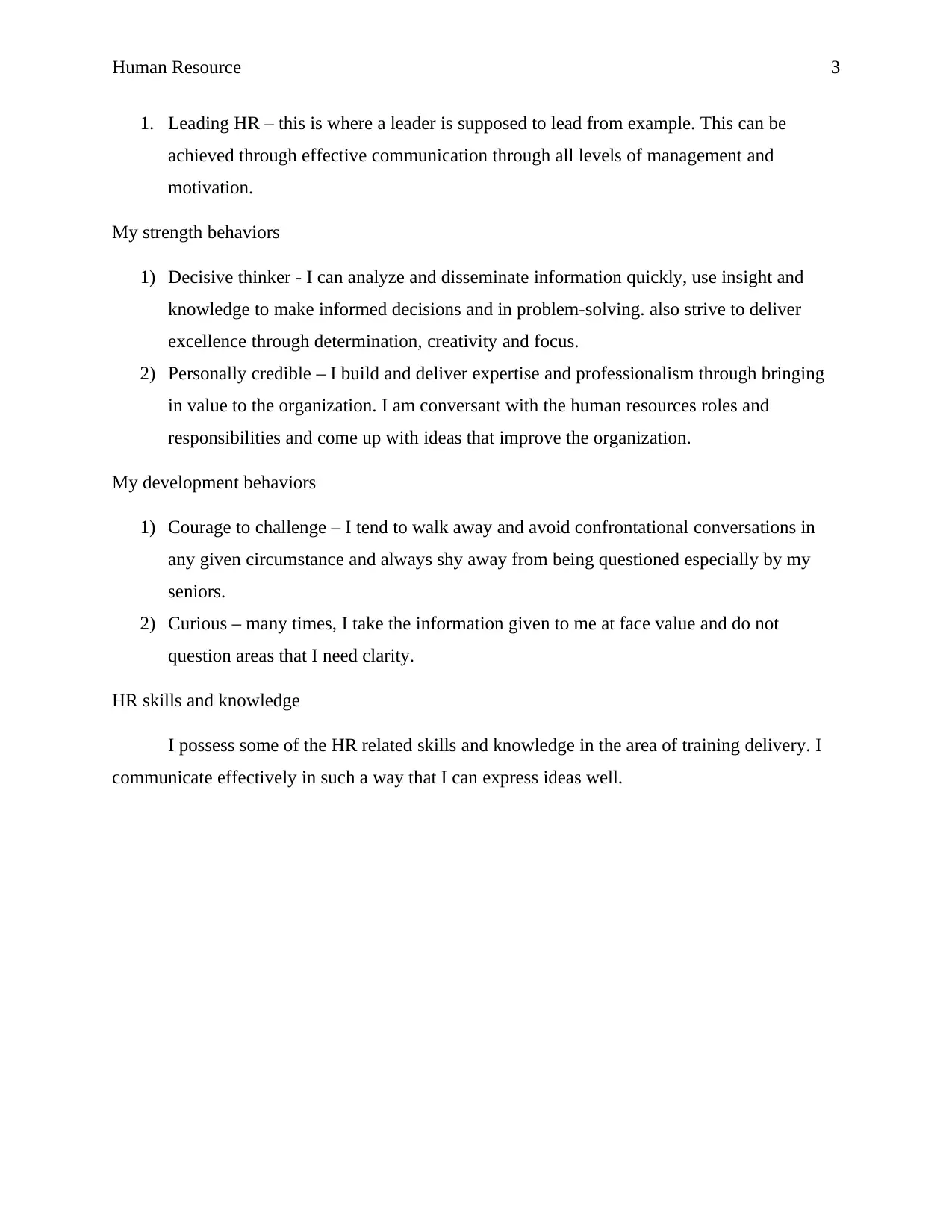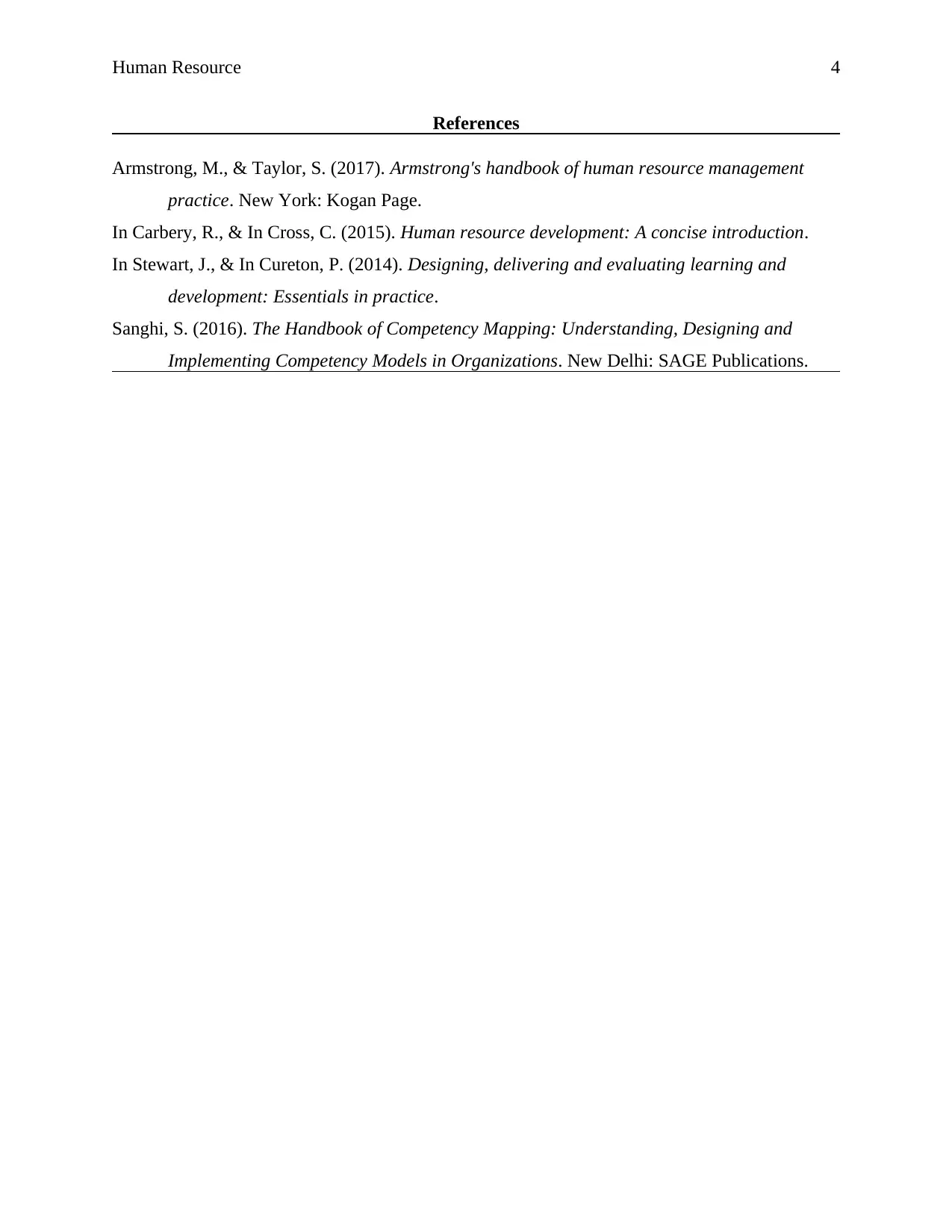Human Resource Report: Skills, Behaviors, and Professional Map
VerifiedAdded on 2023/06/08
|4
|688
|121
Report
AI Summary
This report provides an analysis of human resource skills, behaviors, and professional development. It begins by outlining the author's current role as an initial assessor and their aspirations to advance within the human resource field. The report then delves into the key behavioral traits required for the role, such as curiosity and critical thinking. It also discusses the author's current stage of development, professional areas of interest, and strengths, including decisive thinking and personal credibility. Furthermore, the report identifies areas for improvement, such as the courage to challenge and curiosity. It also highlights the author's HR-related skills and knowledge, including effective communication and training delivery. Finally, the report references key academic sources that support the analysis.
1 out of 4











![[object Object]](/_next/static/media/star-bottom.7253800d.svg)